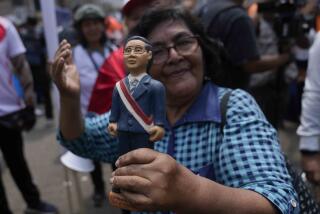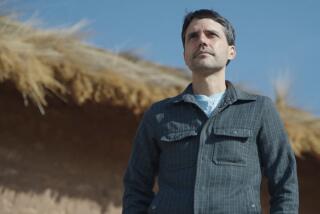Peru’s Land Reform Program Is Failing to Feed Its Growing Population
- Share via
CANETE, Peru — Though the ancient Incas thrived on this Andean nation’s stingy soil, Peru today has farming woes that drain its funds and leave it short of food.
Analysts say the major culprit is a land reform program, South America’s largest, that has failed to keep modern Peru’s feeble farm production growing at the same pace as the population.
“Agriculture was mortally wounded by the agrarian program,” Peru’s leading newspaper El Comercio said in a recent editorial bemoaning the 20th anniversary of the event.
Many people think the spreading chaos in Peru--marked by the flight of hundreds of thousands of highland peasants to city slums, a deep economic recession and a leftist guerrilla insurgency--has been aggravated by the failure of land reform.
Politicians and agronomists alike are frantically seeking solutions, and they hope recent legislation will help.
The issue is reflected by “The Castle,” an ornate mansion on a former cotton baron’s estate. It sits like a fading symbol on the outskirts of Canete, an oasis town on the desert coast, 100 miles south of Lima, the capital.
Like hundreds of other large farms, the estate’s 1,500 acres were expropriated and organized into a cooperative for the 100 peasant families who had worked the land as virtual serfs.
Today The Castle lies abandoned and deteriorating, much like the agrarian reform instituted by the leftist military ruler at the time, Gen. Juan Velasco.
But its surrounding fertile farmlands have begun to reflect their former glory since the government allowed the cooperatives to be divided up among their members.
“Under Velasco we all made good money, but no one wanted to work,” said Jubilio Ensiso, 42, one of The Castle’s farmers. “They’d spend just four or six hours in the fields.
“Now we put in twice that because we are working for ourselves.”
Velasco’s land reform program sought to break the aristocracy’s grip over the countryside.
About 22 million acres were redistributed, more land than in any reform program outside of Cuba.
Productivity suffered as peasants with no management experience took control. Analysts say the program eventually failed in a morass of inefficiency due to poor planning and execution.
Fewer than 20% of Peru’s landless peasants actually received land, according to the Institute for Peruvian Studies, a private social research center.
Since the program began in 1969, farm output has grown slightly more than 1% yearly, while the population grew by 2.5% a year.
As a result successive governments have had to increase imports of food staples. The 1988 foreign grocery bill reached $600 million, one-quarter of Peru’s export earnings.
The problem was aggravated when the debt-strapped government of President Alan Garcia late last year ran low of foreign currency to pay for the imports.
Sporadic shortages of wheat, dried milk and other staples have plagued Peru since then, and the government has asked other nations for emergency food.
Modern farming woes contrast sharply with the success of the Incas, who routinely had a surplus after feeding a population estimated at more than half of Peru’s current 21 million.
Though the Spanish destroyed the Incas’ highly organized society, some of their agricultural expertise, including desert irrigation canals and mountain terraces, is still widely applied by Peruvian peasants today.
Five years ago the government drastically modified the failing reform program and began allowing cooperatives to cut their lands into parcels, with equal sections going to members to reap whatever profits they could.
Farmer Ensiso says output since then at the former cotton estate here has grown about 20% since then, a figure he says is generally true of other cooperatives that divided up their lands.
More to Read
Sign up for Essential California
The most important California stories and recommendations in your inbox every morning.
You may occasionally receive promotional content from the Los Angeles Times.













